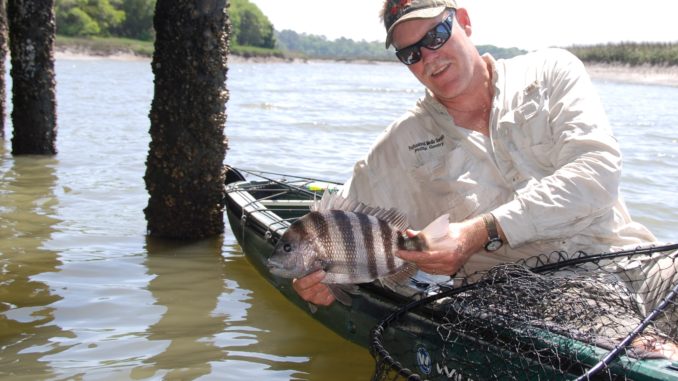
Look for cooler, deeper water when you’re paddling saltwater for homegrown or migratory targets
For anglers who love to fish when the mercury starts to rise in earnest, there’s no better place to be than on the water in a kayak.
July is one of the best months to fish from a kayak in saltwater, with inshore, nearshore and even offshore fishing — if you have means to piggyback — for most of the usual species plus the migrants who visit during the summer months.
While puppy drum and speckled trout may be harder to come by in the marshes, there are still enough of them, plus flounder, to make an outing interesting. Outside of the big three, other species like ladyfish, sheepshead whiting and sharks are there for the taking.
On the freshwater side, fish have headed for deeper water during the day, but by fishing early and late — and maybe even some nights — plenty of fish are there to be caught.
If you’re fishing inland, a great tactic is to search for inflows of cooler water, especially those originating from water releases from an upstream reservoir. Fishing in a tailrace may be good around the clock, but it gets immeasurably better once water begins to be released. Such inflows make for a good one-way float trip, but caution is urged if your plan is to fish close enough to the dam that the current presents a hazard.
Whether you are casting artificial baits into rips and cuts caused by moving water from the tide or from water release or setting up to soak live bait in a deep hole, boat positioning is a critical factor. The beauty of moving water is that you can scull or steer the boat into position, drop anchor or stake out and fan-cast the area thoroughly.
In a conventional boat on flat water, dropping anchor is relatively simple; the boat settles into place, and you adjust your fishing location inside the boat and start fishing. As your position within a kayak is relatively fixed — you can’t get up and move to the other side, installing an anchor-trolley system allows you to position the anchor point on the kayak so the boat settles out in the current with you facing in the desired direction.
The trolley is a ring or connection point that adjusts from the bow to the stern of the kayak or any point in between.
For anglers wanting to take advantage of the low-light and after-dark hours to fish from your kayak, what could be better than throwing a stowable hammock tent in one of your compartments and grabbing some shuteye right there on the edge of the water?
Hammock camping and kayaking go hand-in-hand, allowing the kayaker who’s on an overnight excursion or just wanting to be close to the lake in time to catch the early morning bite an alternative to waking up an extra two hours early and packing everything to the water. Portable hammock tents are also great for catching a mid-day nap when the fishing slows.
Jigging sheepies
An 8- to 10-foot jig pole might seem more at home in a crappie-fishing boat than in a saltwater kayak, but for inshore anglers looking to do some perch-jerking, borrowing this freshwater tactic works pretty well.
Sheepshead are well known for holding around vertical cover, light biting, and gravitating to the bottom when it comes to feeding. Like crappie fishing, presenting a bait vertically helps to defeat many of a sheepshead’s defenses.
I once saw a youngster jigging vertically while walking around the base of a bridge and the jetties beside the bridge. He had a cricket tube full of fiddler crabs on his belt and a jig pole in his hand. He wore high-top tennis shoes and would perch on a rock, reach out with a simple split-shot rig on the jig pole and ease the crab to the bottom. By the time he caught his third 2-pound sheepie, I had made up my mind I was bringing a crappie rod the next day.
To compensate for the oyster-lined rocks, I spooled a spinning reel with 20-pound mono and used a No. 2 Kahle hook on the end of the line. Several times, I was tempted to complete the rig with a 1/8-ounce jighead to present the crab, but I never got further than adding a heavy split-shot 6 inches from the hook.
Though I was not nearly as successful as the youngster I had seen the day before, my kayak/sheepshead connection had a new weapon. One tip that did take a little getting used to was fishing under overhead structure while sitting low to the water in the kayak. Not unlike crappie fishing around boat docks when jigging, the hookset with the long rod needs to be out and away from the structure to keep from slapping the tip on the underside of the dock or pier and damaging the rod.

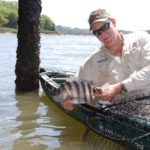
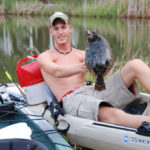
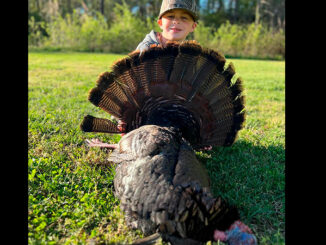
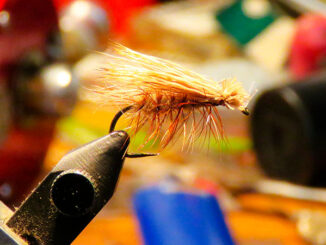
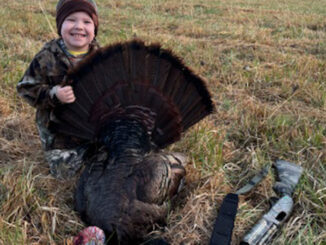

Be the first to comment